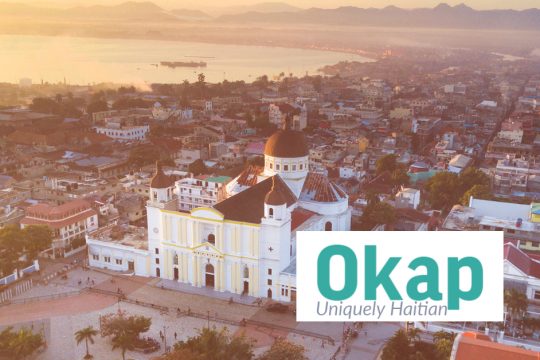Hector Hyppolite was born in Saint Marc in 1894 and was a third generation vodou priest. This houngan background would heavily influence his art and future fame, as “ethereal” and “otherworldly” are qualities we often attribute to surrealism. Surrealism as an artistic movement came about after World War I, likely as a psychological escape from the harsh reality of a post-war world. It seeks to present dreams as a type of super-reality and is heavily influenced by Dadaism, another avant-garde post-war artistic movement whose themes rejected logic, reason and made mockery of violence and nationalism. Although Hyppolite’s paintings are generally less like dreamy surrealism and more like religious realism, he is widely regarded as a surrealist due to the limited understanding of Vodou and Vodou religious themes at the time.

Hyppolite’s talents were first discovered by Haitian novelist Phillipe Thoby-Marceline, when the latter encountered the fifty-two-year-old artist working as a shoemaker in his hometown of Saint Marc. Thoby-Marceline encouraged Hyppolite to bring his unique skills to Port-au-Prince, the nation’s capital. There Hyppolite produced works of art using chicken feathers as brushes, along with his fingers and with cardboard as his canvas. He sold these pieces to tourists and visiting United States Marines and also took up painting murals on doors and houses as a means to get by. One of these elaborate murals, an assortment of vibrant flowers and birds decorating the door of a bar in Montrouis, caught the eye of Dewitt Peters, a watercolorist from the United States.
Peters had initially come to Haiti to teach English, but eventually decided to open up an art studio in the center of Port-au-Prince, as a way to foster all the talent and creativity he saw around him. This center offered free materials, allowing Hyppolite to use real brushes in his work. Peters invited Hyppolite to work in the center in 1944 and it was during this time that he would go on to produce some of his most notable works. The studio was named Le Centre d’Art and it is still open today. Known as the “cradle of Haitian art” this center, which saw the rise of one of Haiti’s most famous artists, has fostered the artistic community of Port-au-Prince since 1944.

In 1945, famous French surrealist André Robert Breton came to Haiti with fellow artist Wilfredo Lam. He visited Le Centre d’Art and was immediately enthralled by Hyppolite’s work. Breton purchased five of the artist’s paintings and went on to write favorably about Hyppolite in his book Surrealism and Painting. This not only tied Hyppolite to Breton’s concept of surrealism, it placed him among the greatest surrealists of the time and exposed him to a worldwide audience.
Two years later, Hyppolite was invited to exhibit his works at a UNESCO exhibition in Paris called Le Surréalisme En 1947, where his pieces were wildly popular. He was so popular, in fact, that later on one of his cardboard paintings would go on to sell for a record-breaking $75,000 at Christie’s of New York. Truman Capote, an American novelist most well-known for his book “In Cold Blood”, admired Hyppolite’s work for its honesty “because there is nothing in it that is slyly transposed; he is using what lives inside him: his country’s spiritual history, its sayings, and worship”.

Sadly, only three years after his rise to worldwide acclaim, Hector Hyppolite suffered a fatal heart attack in 1948 at the age of 54. Today, Hector Hippolyte is remembered as the grand maître of Haitian art. During his lifetime he created between 250 and 600 paintings and his work is still widely loved. One of his pieces- “La Reine Congo (1946)”- remains on permanent display in the “Masters of Popular Painting” wing of The Museum of Modern Art in New York City.

Marleen is a Haitian Creole translator and Language Advocate. After completing her Graduate Studies at the Institut d’Etudes Politiques de Paris (SciencesPo), she decided to launch Creole Solutions to focus on her mission to promote Haitian language and culture. She worked for the Consulate General of Haiti in Chicago and the United Nations Environment Program in Haiti.
Marleen se yon tradiktris k ap travay pou defann dwa lang. Apre li te fini ak etid siperyè li nan Institut d’Etudes Politiques de Paris (SciencesPo), Marleen te deside lanse Creole Solutions pou konsantre sou misyon li pou voye lang ak kilti lakay monte. Avan sa li te travay pou Konsila Jeneral Ayiti nan Chikago ak Pwogram Nasyonzini pou Anviwònman an Ayiti.







